Blog Log, 27 June 2009 (Part 1)
 July 1, 2009
July 1, 2009
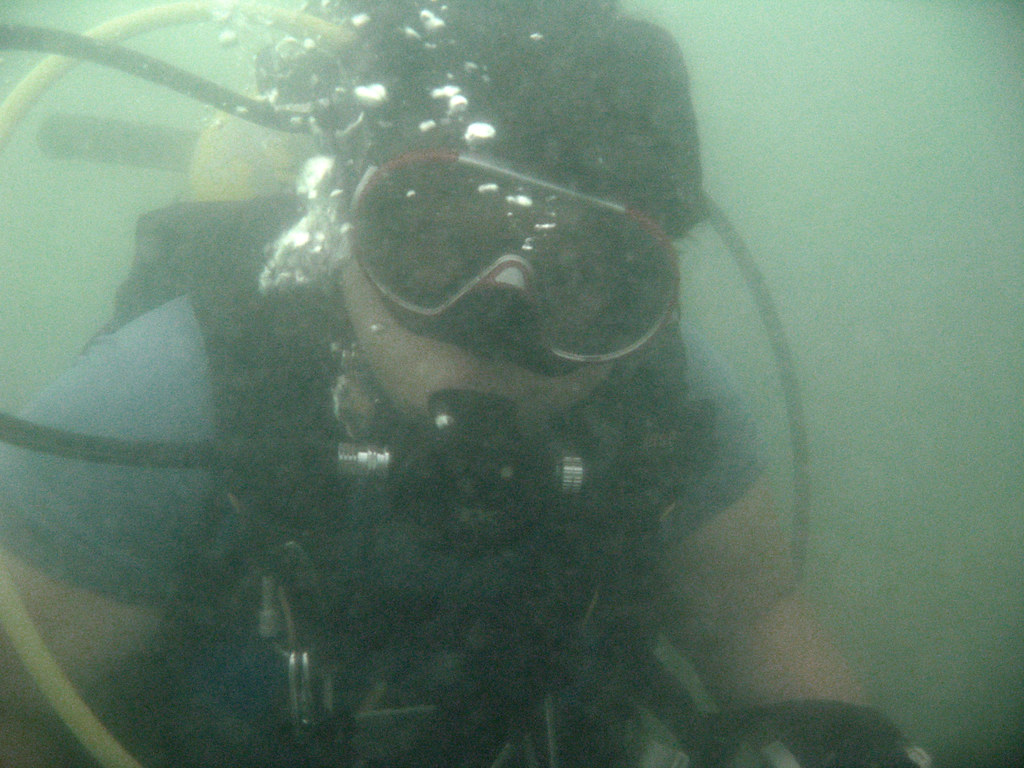
Toh Chay Hoon, Hantu Blog diver and nudibranch enthusiast
Pulling into the shallow reef of Hantu this Sunday during the low tide required some careful maneuvering by our skipper. Thankfully, we had Hup Heng at the helm, who’s only been navigating local waters for the past several decades! As soon as we plunged into the water, Chay Hoon (above photo) looks to me and exclaims that the water temperature (that’s usually between 27-29degC) was at a searing 33degC! We confirm this later when we check with another volunteer who’s computer also reads 33degC.

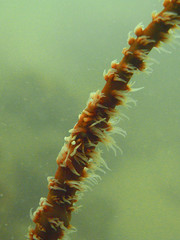
Wandering about the depths that actually weren’t as murky as they looked on the surface (or have I just got too used to the low visibility!?), the weekend began with tiny little critters such as this perfectly camouflaged crustacean on a whip coral (left). The photograph next to it shows a whip shrimp, another well camouflaged crustacean. The whip coral has its feeding tentacles extended and helps the shrimp seem more invisible.
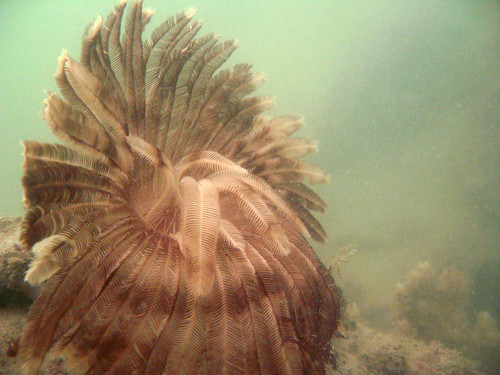
There was also a massive crinoid perched right on top of a large boulder with its legs or feeding arms widely spread, taking in all the tiny little bits of yummy plankton. Crinoids are also known as featherstars or sea lilies.
Crinoids are capable of swimming (or walking!) about by undulating their “arms” and are sometimes found with a small crustacean known as a squat lobster. Though it’s called a “lobster”, they look more like crabs. Crinoids are a kind of echinoderm, related to sea cucumbers, sea urbins, and seastars (starfish). Other divers managed to spot a squat lobster during this dive but I was snooping around elsewhere so missed the action and the chance of photographing it!

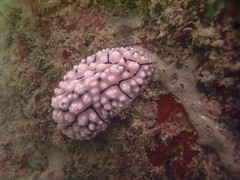
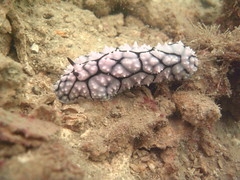
What I initially thought was one sea slug turned out to be two sea slugs, resting close to each other along the side of a boulder. The lines and patterns on their bodies really do help to break the outline of its shape when they’re huddled together like that! The thumbnails show other Phyllidia seaslugs that were spotted during the dive.

Above are some shots of crinoids hanging out with other marinelife such as (from top left) a sea fan, black coral, and a juvenile on a whip coral. Crinoids can be found in an array of different colours but the variety most commonly spotted in our reefs are a maroon colour, which really makes them stand out! Come crinoids also like to hide in nooks and crannies within the reef during the day time and crawl out of their holes at night.
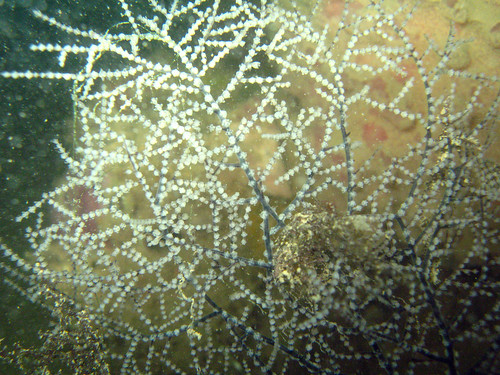
A detailed look at the polyps on a black coral. Black coral is a threatened species. It has for centuries been harvested for the manufacture of jewelery and other accessories. Unlike other corals it has a black skeleton.

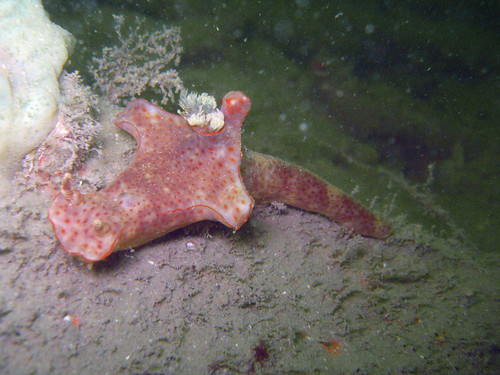
We managed to spot a few Ceratosoma nudibranches. The most commonly encountered one in our reefs is the Slender ceratosoma. From the two above pictures you can see that their colours may vary slightly.
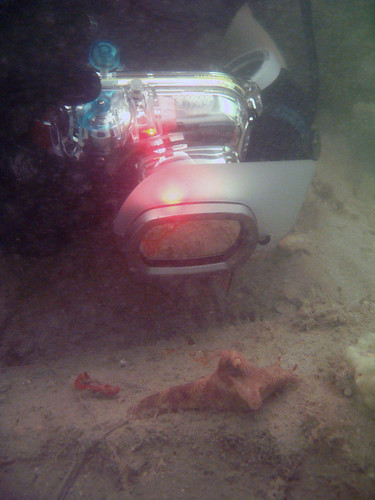
Certain individuals can get really large! Here, Chay Hoon photographs a Ceratosoma nudibanch. You may be able to estimate its size relative to her camera!

Just after I spotted the Ceratosoma nudibranch, Volunteer Dive Guide Pei Min pointed out this Giant Reef cuttlefish to me. It didn’t seem too bothered to be photographed and at a point even extended its arms. It might’ve looked like it was yawning or stretching but my guess it that it probably spotted a prey in the murky water and was about to snatch it out of the water but didn’t in the end. Cuttlefish, like squid, have both arms and tentacles. The tentacles are the two longer arms that you only see when it’s about to snatch its prey. Hidden beneath those arms is a pair of formidable beaks that resembles the beak of a parrot.
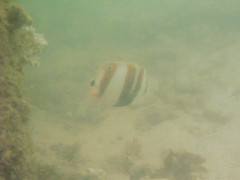

The first dive of the day ended with these two fish. On the left is a brightly-coloured and very dangerous though very beautiful Blue-spotted Ray, and on the left is a what I thought was a Kite butterflyfish Parachaetodon ocellatus, but was later informed it is a Golden-girdled or Orange-banded coralfish Coradion chrysozonus. Marine biologist and PhD Candidate Jeffrey Low informed me that it is one of just five butterflyfish that have been recorded in Singapore. And like the Parachaetodon, it is not as common as the copperbanded and 8-barred butterflyfish. This shy fish is usually found solitary or in pairs, over reefs and also in estuaries. It feeds on coral polyps and small invertebrates. Though is it a popular aquarium fish, they are less often sighted in in the reefs and are difficult to photograph due to their skittishness.
(To be continued)

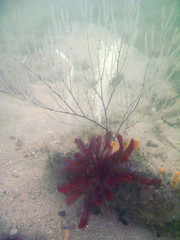
 Posted in
Posted in 



 content rss
content rss
COMMENTS